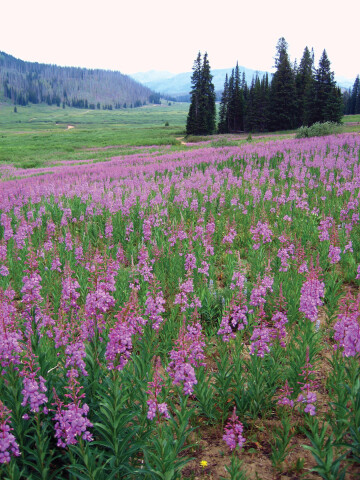Recognizing Our Diversity
The Custer Gallatin National Forest covers vast and diverse stretches of southcentral and southeastern Montana and northwestern South Dakota. At our first set of public meetings, in February and March of this year perhaps the most common theme we heard was to recognize this diversity and avoid a one size fits all forest plan. We heard this in almost every single public meeting we hosted and the theme is an important one.

With more than 3.1 million acres, the Forest includes some of the most ecologically diverse stretches of national forest system lands in this region; from West Yellowstone all the way to dinosaur bones, buttes and bluffs of Camp Crook, SD. There is perhaps as much variety in the interests, cultures and communities, along with the way people utilize the land, as there is in the land itself.
A Forest Flan Revision could be synonymous with running a marathon or maybe even an ultra-marathon. We started this journey, had our initial public meetings and collected information from the public as it pertains to the Assessment of Existing Conditions. Over the last several months we have been working to determine what the current conditions are on the forest, what needs to change from our ‘86 and ‘87 plans and sifted through best available scientific data to determine what is most applicable to our landscape. We’re a couple miles in, we might hit an aid station soon and fuel up, having just welcomed on the remaining members of our core Forest Plan Revision Team. Looking ahead, we have quite a ways to go.
“Thank you for the information we’ve received to date, more opportunities will come throughout the process in both formal and informal periods,” said Mary Erickson, Custer Gallatin Forest Supervisor. “When we travel across this landscape, visiting with communities and listening to what people have to say it is evident that interests are widespread,” Erickson continued, “and we recognize that the forest plan needs to be flexible, adaptable and true to that diversity and place.”
As the Forest Service we strive to sustain the health, diversity and productivity of our nation’s forests and grasslands for present and future generations. It is a balance to listen to what we hear, to see and study what the landscape needs, to collect data and to balance all the uses and interests of people on the landscape.
As we move from our information gathering assessment phase into a more interactive planning phase in the fall, take a look at the interests around you. What is the right balance, how do we make a plan that is adaptable over the long haul, is sustainable, balances interests, sets reasonable standards and recognizes our unique traits? We are in this marathon to see. Over the next year, we will all come together and work through what we see as the future of the Custer Gallatin National Forest. We encourage you to hop into the flow with us, pace appropriately and work together to get to the finish line with a product that represents the spectrum of the communities we serve.
Recognizing the diversity of the forest and not a one size fits all approach is not the only thing we heard, but it was one of the most common themes. We also heard several questions asking for clarification on existing designations, we went beyond the common wilderness and wild and scenic river destination questions to show the range of designations that exist currently.
Take a look at the designations through the lens of a variety of options. We will look to balance interest into the future so let’s be creative with developing the plan and work together to determine what is the vision of the forest for the coming decades.
Some Baseline Facts
Of the nearly 3.1 million acre Custer Gallatin National Forest, nearly 1.1 million areas are existing congressionally designated wilderness areas with the Absaroka Beartooth Wilderness and the Lee Metcalf Wilderness units including Taylor Hilgard, Spanish Peaks and Monument Mountain.
What also exists:
1 Wilderness Study Area known as the Hyalite Porcupine Buffalo Horn Wilderness Study Area created by Congress as part of the 1977 Montana Wilderness Study Act.
1 Recreation and Wildlife Management Area, the Cabin Creek Recreation and Wildlife Management Area designated by Congress as part of the Lee Metcalf Wilderness Act.
1 Wild Horse Territory designated under the 1971 Wild Horse and Burro Act, as a refuge for wild horses to be protected as living symbols of the historic and pioneer spirit of the West.
3 National Natural Landmarks recognizing and conserving sites that contain outstanding biological and geological resources including Capitol Rock and the Castles on the Sioux R.D., and Middle Fork Canyon in the Bridger Mountains.
7 Forest Plan Recommended Wilderness Areas (not designated by Congress) including Lionhead near West Yellowstone, five small areas adjacent to the current Absaroka-Beartooth Wilderness area and North Absaroka Wilderness, and Lost Water Canyon in the Pryor Mountains.
10 Research Natural Areas established to maintain representative areas of natural ecosystems and areas of special ecological significance.
12 Forest Plan Eligible Wild and Scenic rivers (not designated by Congress) including segments of the Madison River, Gallatin River, Yellowstone River, Boulder River, Clarks Fork of the Yellowstone River, Stillwater River, West Rosebud Creek, East Rosebud Creek, West Fork Rock Creek, Lake Fork Rock Creek, Rock Creek, and Crooked Creek – Lost Water Canyon.
13 National Recreation Trails consisting of over 100+ miles and 27 miles of the Continental Divide National Scenic Trail.
Other designation options exist, this just provides a baseline of existing Custer Gallatin National Forest designations. Read about definitions, designations and FAQ’s online: www.fs.usda.gov/custergallatin, right-hand quicklink – Forest Plan Revision
Next up, our second set of public meetings aims to share some initial Assessment results, share some of our initial ideas about the need to change the existing Forest plans, and to hear ideas from the public about the state of the Forest and their ideas of what needs to change.
Public meetings are June 14-30 across 8 different locations, along with three webinars.
• June 14 – Ashland, Ashland Public School
• June 15 – Ekalaka, Carter County Fair Building
• June 16 – Buffalo, Buffalo Recreation Center
• June 20 – Big Timber, Big Timber High School Cafeteria
• June 21 – Red Lodge, Edgar Gruel Building, Carbon County Fairgrounds
• June 22 – Gardiner, Gardiner Community Center
• June 28 – West Yellowstone, Povah Community Center
• June 29 – Bozeman, Chief Joseph Middle School Multipurpose Room
• Webinar Series - June 23 & June 30
Visit online (www.fs.usda.gov/custergallatin) for times and details, click right-hand quicklink)

